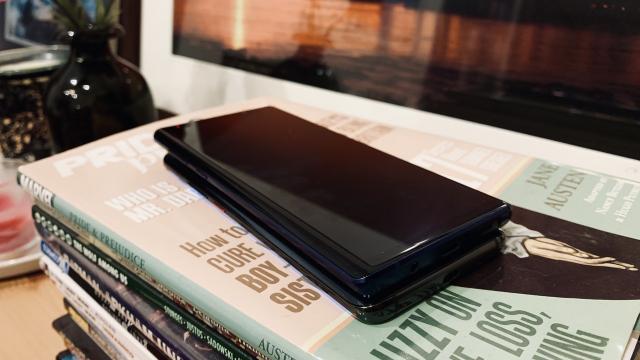In case you missed the news, Huawei finally has wireless charging on a device other than the Porsche Design Mate RS. It’s been a long time coming and was a welcome, if not surprising edition to the new Mate 20 Pro.
But that wasn’t all that Huawei had to reveal at its launch event. The Mate 20 Pro is also a reverse wireless charger – meaning that it can charge other Qi wireless-enabled phones. And while this is a cool concept, it’s still a bit of a gimmick.
I’ve spent just under a week with Mate 20 Pro, which has given me enough time to run several tests on the reverse wireless charging. So far, it’s not particularly impressive.
Setup is easy enough – all you need to do is enable ‘Wireless Reverse Charging’ in the battery section of the Android settings. From there, you just have to pop the phone down and place a Qi-enabled phone on top to start charging.
If the Mate 20 Pro doesn’t detect a Qi-enabled device, or any device at all, it automatically disables reverse charging. It’s a great feature that I liked a lot, given the battery savings.
I also expected the physical aspect of charging to be a little finnicky. Anyone who has experienced some early wireless chargers will know that placement was important – being a fraction off centre could cause a device not to charge.
But I didn’t have a problem with the Pro. My test devices happily charged whilst lined up directly with the Mate 20 Pro, even when the angles were slightly skewed, and also while laid horizontally like a cross. I only had some minor issues with the iPhone XS Max due to its rear surface, but it wasn’t too bad.
Overall, I was impressed by the usability. But I can’t say as much for the charging itself.
I started using one Mate 20 Pro to charge another Mate 20 Pro during a 23-minute episode of Naruto, because I’m an adult. It’s also roughly the most amount of time I would want my mobile to be out of commission while mooching charge off a friend.
During the first episode the phone being charged only gained 3%, but the one being drained lost 9%. Over an hour, the charging Pro gained 13% battery while the other lost 34%.
My second test was on a Samsung Galaxy Note 9, which had similar results. After one Naruto episode the Note 9 had gained 3% while the Mate 20 Pro lost 10%. In a separate hour-long test, the Note 9 gained 14% battery, while the Mate 20 Pro lost 37%.
Lastly, I tried out the iPhone XS Max. After one episode the iPhone gained 6% battery and the Pro lost 11%. Over an hour, the iPhone gained 14% and the Pro lost 31%.
[referenced url=”https://gizmodo.com.au/2018/10/huawei-mate-20-and-mate-20-pro-australian-price-specs-and-release-date/” thumb=”https://gizmodo.com.au/wp-content/uploads/2018/10/huawei-mate-20-1-410×231.jpg” title=”Huawei Mate 20 And Mate 20 Pro: Australian Price, Specs And Release Date” excerpt=”It’s only been six weeks since the Huawei Mate 20 was announced at IFA, but boy has a lot happened since then. There were fresh leaks and rumours every few days … and a lot of them were right.
But the wait is finally over and we have laid our eyes on them for real this time. Here’s how much the Mate 20 and Mate 20 Pro will set you back, when you can get your hands on one in Australia, and exactly what those specs ended up being.”]
While I only had time to conduct a few short tests and certainly not under perfect conditions, they’re still quite telling. They make me wonder if losing so much battery life in order to gain so little is actually worth it – especially given the time factor.
A colleague suggested it could be useful when someone needs a slither of battery for a text or phone call. That’s true, but it still takes a lot of time to scrape together that tiny bit of battery. Would you be willing to wait almost 25 minutes for 5%?
It’s great to have a charging option when there are no powerpoints around, but the outcome isn’t particularly convenient or practical. Even if you are out somewhere that you can stay at for a decent amount of time (like a restaurant or bar), the return on investment is small and you’re significantly draining someone else’s battery in the process.
I like the idea and love the technology behind it all, but it’s too slow to be practical. I wouldn’t rely on it at night or in emergencies. I’d rather borrow the other person’s phone, instead.
Plus, I’m hyper-vigilant with my phone batteries. I make damn sure I have multiple charging options on me at all times, especially at night. I carry a fully charged phone, battery pack, cable, wall charger and sometimes even a second phone with a pin to swap my sim out.
You might call this behaviour paranoid; I call it living in the world as a woman. And carrying all of the above still seems more convenient than scraping 5% of safety every half hour. Because battery life can mean safety.
I genuinely look forward to seeing where this tech is at in couple more years. The concept really is great. But for now, I’ll continue carrying my battery packs around.
